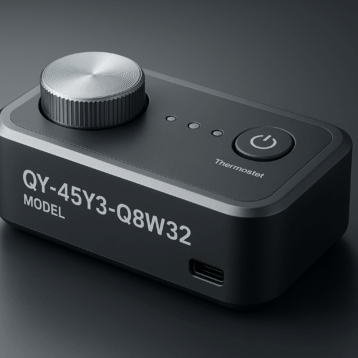
Since the advent of wireless technology, consumer behavior has changed dramatically over time. Households and businesses all across the globe now use multiple devices and smartphones simultaneously while massive data streaming and consumption happens in the blink of an eye. To meet the ever-growing need for data consumption, it’s a no brainer that keeping your Wi-Fi signals running at optimum levels is a necessity. To avoid network degradation, buffering and latency, the first thing to check is your Wi-Fi signal strength. The stronger the wireless signal, the better your network speed will be.
Let’s delve deeper and learn a few tips on how to measure your Wi-Fi signal strength:
1. Using built-in device utilities
Most devices nowadays come equipped with built-in settings that can help monitor your Wi-Fi signal strength. Both Windows and Mac users can take advantage of such options to ensure they are receiving the promised signal strength by their ISP. If you are an iPhone user, you can go to Settings> Wi-Fi. This will show you the network you are connected to, its Wi-Fi strength and also the adjacent networks and their signal strengths. The more curved bars you see, the better the signal strength will be. Similar approaches are used for Android phones and tablets as well. If you are a Windows user, you can access the network settings either from the taskbar or the Control Panel to analyze your signal strength. Be aware that checking your signal strength through the in-built utilities is not always 100% accurate, but it does give a pretty good picture of where your Wi-Fi signal stands.
2. Using browsers to perform simple speed test
If you are dealing with sluggish response times on the internet, loads of buffering while streaming videos or any kind of lag on your devices, a browser-based speed test can sometimes solve the puzzle. It is a simple internet speed meter that is performed by plugging in your IP address that is then pinged across a test server to measure the response time after which subsequent download and upload speed tests are performed. Depending on the results, you can further troubleshoot and improve your wireless network accordingly. So, an internet speed test is definitely worth your while.
3. Using Wi-Fi Signal Strength Meter Apps
A Wi-Fi signal strength meter app analyzes your wireless network and the adjacent hotspots. It also performs surveys, does Wi-Fi analysis, creates heatmaps and provides triage and troubleshooting help with any underlying network performance and security related issues. There are a plethora of Wi-Fi analyzer apps available on the internet, however, one app that shines above the rest is known as NetSpot. It is a suite of Wi-Fi analyzing services that offer various support packages ranging from free to premium options for both novice and advanced users. In a nutshell, NetSpot is the best app for anyone trying to analyze or enhance their network’s Wi-Fi strength, speed and agility. Armed with visual tools, charts and deep analysis, this app provides a great heatmap of your entire wireless network. If an optimized network is crucial for your success, then let this user-friendly app investigate any loopholes in your Wi-Fi network.
4. Using spectrum analyzers
Though most users will only need a software or app-based network analyzer to assess their Wi-Fi signal strength, there are instances where mission-critical networks might need an RF spectrum monitor device that can analyze the physical layer of their wireless network. When it comes to demanding services like VoIP, streaming videos, conference calls and security-based infrastructures, a consistent wireless signal with no bottlenecks is paramount. This is where these physical layer test instruments come into play.
5. Using small key-chain sized Wi-Fi locator devices
Small key-chain sized Wi-Fi locator devices are very popular and can be instrumental in locating a wireless signal and checking its strength for people who are in a jiffy. With their portable nature and compact design, they are an ideal companion to take with you on long road trips, or anywhere on the go.
What should Wi-Fi signal strength be?
An important aspect of measuring your Wi-Fi signal is to educate yourself on what an ideal Wi-Fi strength should be. The unit of measure for Wi-Fi strength is called decibel milliwatts or in short dBm. It is a negative number that is in the range of 0 to -100. Your signal strength is dependent on my factors including your network requirements and the tasks you are trying to achieve. For a home user performing simple tasks like checking emails and surfing the net, an average speed of -70 dBm will suffice. However, as you add smartphones, multiple devices, streaming videos, and gaming apps, etc. into the mix, your signal strength would need to bump up accordingly. To achieve the best signal strength, a -30dBm would be an ideal number.
How to boost Wi-Fi signal strength
Do not despair if you discover that your Wi-Fi network needs a signal boost. Luckily, there are tons of options available to speed up your weak wireless signals in no time.
1. Checking your router
A router is a crucial component in running a seamless Wi-Fi-based network. Sometimes, fixing your Wi-Fi speed can be as simple as changing the placement of your router. As a rule of thumb, a router should be away from obstructions and clutter. Also, electronic devices like cordless phones produce interference, making it difficult for your router to function optimally. Another important aspect is to look into updating your router’s firmware or simply replacing an obsolete router. If all else fails, just adding an extra powerful mesh router on top of the one provided by your ISP, can speed things up immensely.
2. Using a Wi-Fi extender to amplify your signal
Using a Wi-Fi repeater or extender can greatly boost your signal strength. A range extender is not a router but does perform like one. The function of an extender is to take your existing Wi-Fi signal from your current router and to rebroadcast it. A range extender expands your coverage area and comes handy in large buildings and huge houses where signal degradation is unavoidable.
3. Creating a heatmap of your home
A wireless heatmap is a simple map of wireless signal and coverage in and around your house. It is crucial in determining where the signal is weakest or strongest in your house. As mentioned above in the article, NetSpot provides a great option to craft a complete heatmap of your network.
Conclusion
If you are in the midst of sending an important work email, watching your favorite movie or teleworking, a flaky Wi-Fi signal can send you in a dungeon of despair. However, armed with minimal insight, the above-mentioned tips, and some genuine effort, measuring and improving your Wi-Fi signal’s strength is easily achievable.










